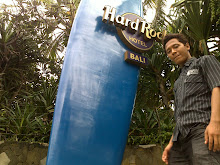As we reported earlier, the two Japanese companies, Panasonic / Sony alliance, each struggling to turn round the TV decided to join forces to tackle the threat from Korean rival Samsung and LG.
Both the Korean company plans to launch OLED TVs this year, and currently leads the Japanese TV industry with a considerable margin in the global TV sales.
Panasonic / Sony alliance aims to develop technologies to produce next year OEL panels, capable of higher image quality while using less energy.
Both companies have so far been working on a different approach to the manufacture of panels, Sony with a system based around spraying materials as high temperature steam, Panasonic based on ink-jet printing technology.
Estimated Panasonic will work with Sony to seek cooperation with AU Optronics.
Panasonic and Sony, long-term rivals in the global TV market, look set to put aside their historic differences and co-operate on the development of 'a new generation' of TVs using organic electroluminescent displays – otherwise known as OEL or OLED.
And it's clear that both Panasonic and Sony need to produce something to turn around their consistently loss-making TV operations, and do so as economically as possible.
Both companies posted losses for the financial year recently ended – Sony Y456.6 (just over £3.5bn) in the red, and Panasonic Y772.1 (around £6bn) – and both cited the continued woes of their TV divisions as a major contributing to the poor performance.
But the announcement did, however, have positive effect for the two: rival Sharp saw its share price fall to the lowest level this year, in part due to the greater threat the joint venture could present.
Sony is no stranger to OEL technology: it launched an 11in TV using the technology five years ago, but halted production due to slow uptake and high prices, and manufactures OEL displays for medical, professional and industrial use.
It's expected 2.1m OLED TVs will be sold in 2015, which is when the Panasonic/Sony joint venture is said to be aiming to have product on sale. Around 34,000 sets are predicted to be sold this year.
quote : http://www.whathifi.com














0 comments:
Post a Comment